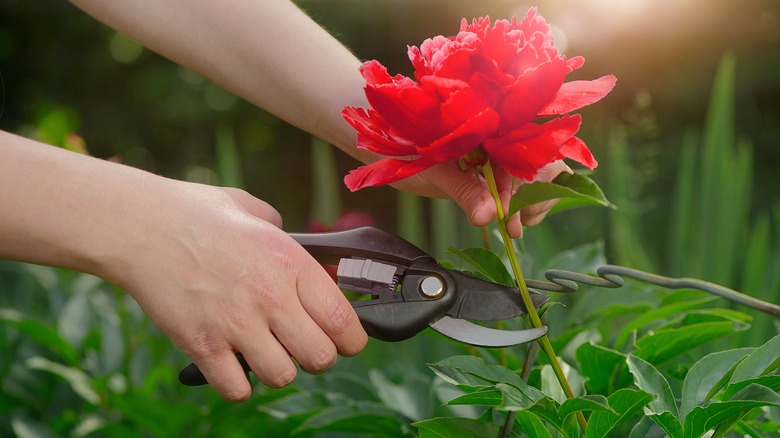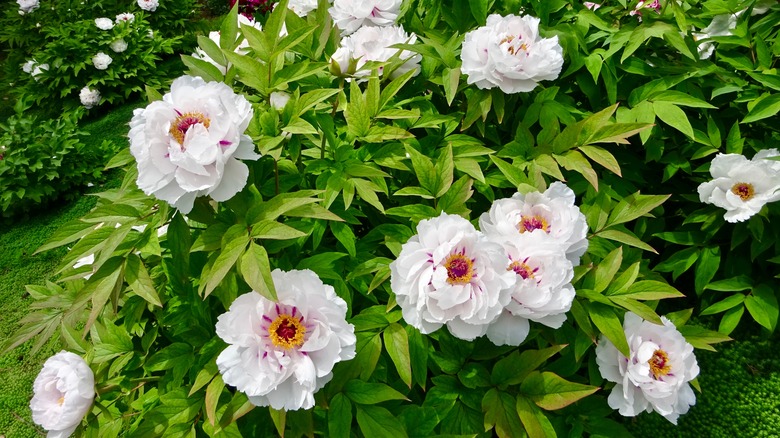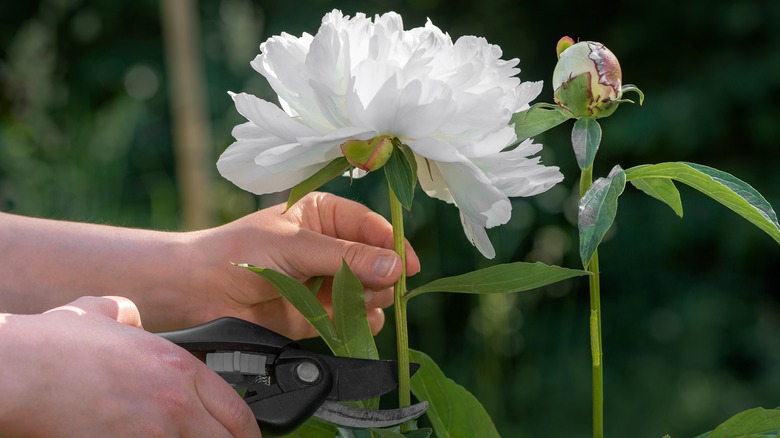How And When To Deadhead Peonies
While there are many different types of peonies of varying color and size, they all tend to be prized for their large, full blooms and striking hues that stand out in any landscaping or gardening scenario. For their beauty alone, they are one of the most popular plants among gardeners and homeowners. Like most other flowering plants, peonies need to be deadheaded in order to keep the plant healthy and make room for fresh, new blooms. Deadheading your peonies not only keeps them looking beautiful and well-maintained but doing so also contributes to the overall health of the plant by encouraging it to divert its use of energy away from the dead blooms and toward new growth. "Removing the dead flowers can also reduce the incidence of common fungal diseases that affect peonies, both by eliminating the moist, contained environments of spent flower heads and also by opening up the foliage for better air circulation," says gardening expert Mary Jane Duford (via Homes & Gardens). "Taking off the spent flowers can help keep the flower stalks from flopping over and damaging the remaining foliage, which is particularly an issue for heavier double peony cultivars."
Though peonies need to be continually deadheaded throughout their blooming season, they are otherwise low-maintenance plants. Simply eliminating the dead blooms by cutting them off at the base of the stem as soon as you notice them beginning to fade away or wilt can keep your peony plant healthy, beautiful, and blooming all season long.
How do you know when your peonies need deadheading?
The best time to remove deadhead your peonies is as soon as you notice the obvious signs of a spent bloom. Though the average bloom time of each variety of peony varies depending on the type of peony plant you have in your garden, in most cases, you can expect each flower to reach its peak bloom anywhere from seven to 10 days after you first notice its buds beginning to open up. After this flowering period of roughly 10 days, the blooms will begin to fade and need eventual deadheading. While a single peony flower won't last all season, peony plants are notorious for producing a lot of blooms in a single season. Deadheading encourages the full and healthy growth of new blooms long after the older ones have been removed, meaning you can enjoy full blooms and bright colors in your garden all season long.
You should make a habit of deadheading your peonies throughout the entirety of their blooming season, which in most cases takes place from April to June. Peony flowers with soggy, brown petals or brown-colored petals that are dried out are the most obvious candidates for deadheading, though sagging, droopy flower heads and ones that are dropping a lot of petals are also ready to be snipped off.
What to do when it's time to deadhead
Prior to snipping off any spent blooms of your peony plant, make sure the pruning shears you use are freshly cleaned so as to prevent potentially spreading any diseases from a previously cut plant to your peonies. Once cleaned, simply remove the dead or fading flowers by snipping them off at the stem right on top of the first set of leaves.
In addition to removing faded blooms, it's also a good idea to pluck off any wilted, browning, or clearly dead leaves. This helps improve airflow within the plant system and allows air, sunlight, and water to better reach the base of the plant instead of being blocked by decaying leaves. Stem segments without any new buds should also be snipped at the base. This not only helps your peony plant look better and healthier as a whole, but it also encourages it to expend its limited energy on growth that will lead to new blooms as opposed to wasting it on continuing to grow long, barren stems.
Once you are finished deadheading your peonies, make sure to thoroughly clean up leftover plant matter, be it leaves, petals, or otherwise, which can attract insects and other pests while spreading disease to other plants if any parts of a diseased peony are left behind.


